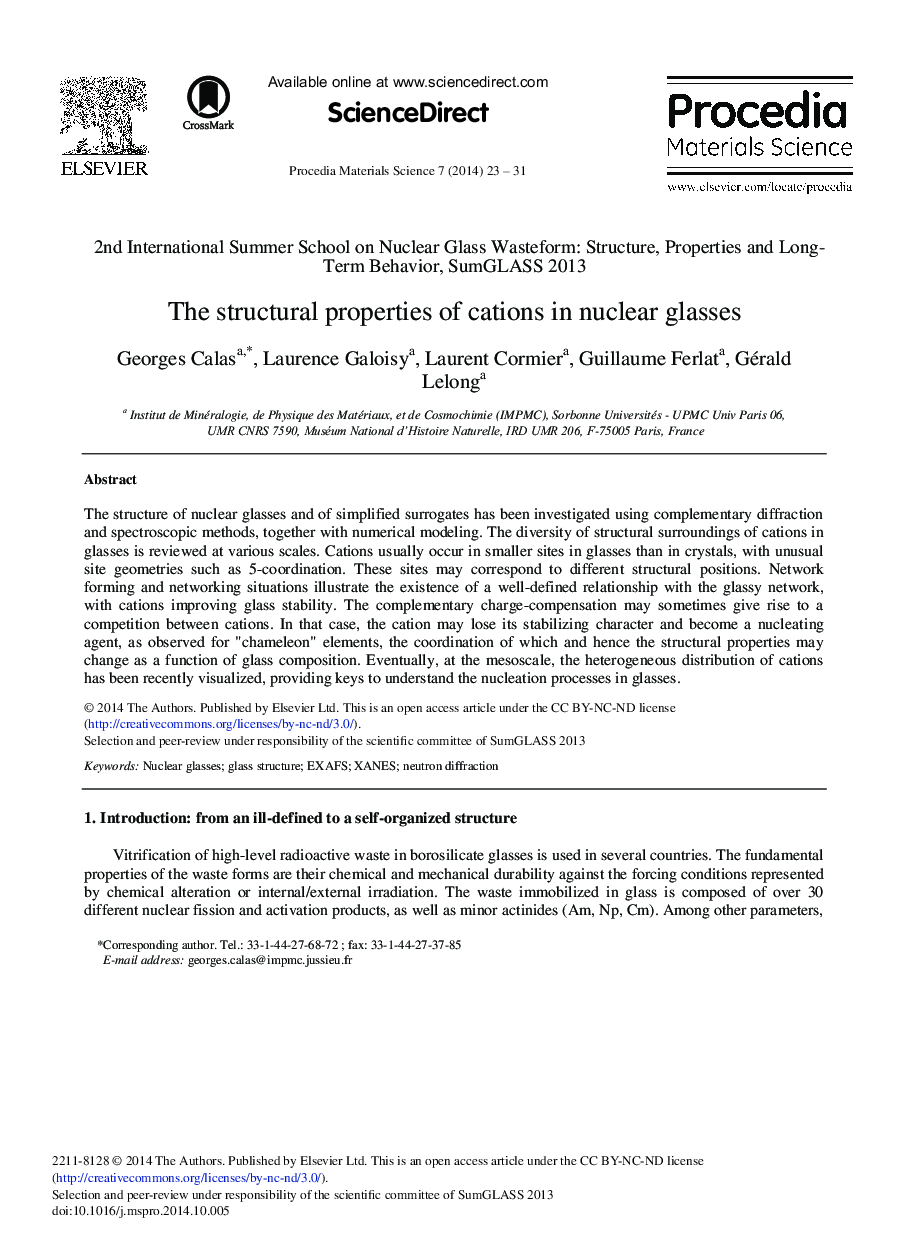| Article ID | Journal | Published Year | Pages | File Type |
|---|---|---|---|---|
| 1634220 | Procedia Materials Science | 2014 | 9 Pages |
The structure of nuclear glasses and of simplified surrogates has been investigated using complementary diffraction and spectroscopic methods, together with numerical modeling. The diversity of structural surroundings of cations in glasses is reviewed at various scales. Cations usually occur in smaller sites in glasses than in crystals, with unusual site geometries such as 5-coordination. These sites may correspond to different structural positions. Network forming and networking situations illustrate the existence of a well-defined relationship with the glassy network, with cations improving glass stability. The complementary charge-compensation may sometimes give rise to a competition between cations. In that case, the cation may lose its stabilizing character and become a nucleating agent, as observed for “chameleon” elements, the coordination of which and hence the structural properties may change as a function of glass composition. Eventually, at the mesoscale, the heterogeneous distribution of cations has been recently visualized, providing keys to understand the nucleation processes in glasses.
